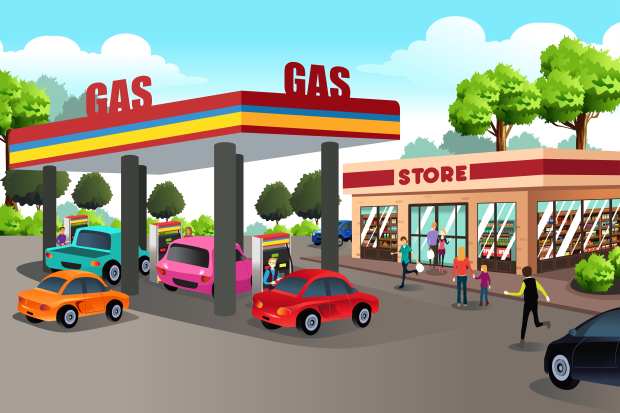The Mixed State Of The U.S. Convenience Store

The latest set of industry figures is out from the National Association of Convenience Stores (NACS), and the report paints a mixed portrait of the status of quick stop shops in the U.S. On the one hand, revenue hit a record level for the 16th straight year in a row, in-store sales are on the rise and food services are acting as both an increasing draw and revenue generator.
So, break out the slushies in celebration?
Well the picture is, as usual, a bit more complicated as not all of the indicator lights are glowing a positive green. Operational costs and wages are on the rise — pulling down margins — locations are closing and the costs of building out new inventory to replace the shops that are closing down is at all all-time high.
But, NACS noted in its release, there is plenty of solid ground from operators to build on as they consider expanding and evolving into the digital age — as consumer enthusiasm seems to be continually growing. According to the report, total U.S. convenience stores sales surged 8.9 percent to $654.3 billion in 2018. That big bump was pushed by a 13.2 percent increase in fuel sales, which account for 69.6 percent of total sales. Gas prices, according to the report, were up 13.7 percent. Fuel margins, however also continued their five-year-long trend of increases — growing 7.5 percent to 23.35 cents per gallon. Overall gallons sold decreased by 0.4 percent.
In-store sales also saw a notable bump — up 2.2 percent to $242.2 billion. Food services, according to the NACS report, were responsible for driving most of that increase. The average convenience store is 3,230 square feet, newer stores however tend to measure out at 4,991 square feet in rural locations, and 4,603 square feet for urban locales. That bigger size, according to NACS, is accounted for by the addition of features like touch screen food-ordering kiosks, open kitchen designs and in-store seating and waiting areas. According to the survey, food service sales accounted for 22.6 percent of in-store sales — though the vast majority of that food (69 percent of sales and profits) comes pre-packed not freshly prepared. Cigarettes still lead the in-store sales — 31 percent of C-store sales come care of the sale of cigarettes and nearly 38 percent come from tobacco products, but that area is rapidly shrinking as food is gaining ground.
Moreover, Andy Jones, NACS vice chairman of research and president/CEO of Sprint Food Stores Inc., noted in a release that the growth of food and other value offerings will only continue to grow as consumers are demonstrably buying less gas, giving operators greater reason to motivate them to come into the store.
“Fuel sales were strong in 2018 but consumers were making fewer stops to refuel, which suggests that greater fuel efficiency in vehicles is translating to less trips per week to the convenience store,” said Jones. “Utilizing NACS research can help retailers track trips per transaction and develop new marketing strategies to bring customers from the pump inside the store.”
Those investments, however, are costly, the NACS study points out, and are adding to the list of areas that are running up direct store operating expenses (DSOE). Also contributing to the inflating DSOE are increased wages, payroll taxes, health-care insurance, card fees, utilities, and supply costs. According to the report, DSOE has outpaced inside gross profit dollars.
“The cost of growth, whether it’s higher acquisition multiples, new store construction or retrofitting older sites, has never been higher in our industry,” said Jones. “For example, the average cost to build a new store has increased over the last five years from $5.6 million to $7 million. These are business trends that convenience retailers should be prepared to address as they continue evolving and growing their businesses.”
